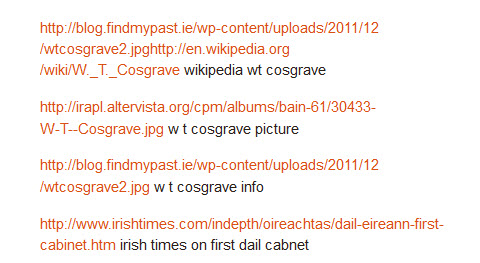Knowing how to organise, filter, research, evaluate and bookmark resources online is a valuable skill for students to gain.
However, we can’t assume giving students access to a social bookmark tool means they’ll know what’s expected or will gain the necessary skills.
This guest post by Donal O’ Mahony shares his experience and advice using social bookmarking with students.
Image by The iconoclastic yet iconic ionic icon licensed under Creative Commons Attribution 2.0
Social bookmarking with students
When I first taught social bookmarking we jumped straight into using Diigo, a social bookmarking tool, and I soon discovered that the students dumped links irrespective of their quality.
I’ve now learnt that:
- Students need explicit instructions and instructions to get the most out of social bookmarking.
- Students must see the point of aggregating bookmarks that they can return to for further use. Don’t expect them to initially appreciate the value of why they should bookmark.
- Students need to be aware of the types of bookmarks they can save. I teach history, so a bookmark could be a link to maps, photos, documents, quotes and so on –it’s like collecting different artifacts online.
- Students need to understand bookmarking is about finding quality links and not quantity.
Teaching quality bookmarking skills
Nowadays I use a different approach.
Step 1: Focus on how to judge the quality of a link
Initially I focus on spend time teaching them how to judge the quality of a link and how to search for a variety of links.
We start by first gathering the links in their Moodle account rather than using a social bookmarking site. If you don’t use Moodle this could be easily done using a Google Doc or a wiki.
Below is an example of a student is collecting links in their Moodle account on WT Cosgrave, first President of the Executive Council) of the Irish Free State from 1922 to 1932.

In the computer-room I focus on moving them from “Look what I found!” to explaining “Why they think it is a good link!”
Step 2: Teach them how to social bookmark
Once they appreciate how to judge the quality of links then I teach them how to social bookmark.
By taking this approach they learn that the true strength of social bookmarking using a Diigo group is individuals saving quality links to it.
There are numerous approaches you can use to set up Diigo:
- Originally I created an account for each student in a group we called TYHISTORY. Diigo is easy to set up and use –other than the usual issue around students remembering passwords! Here are instructions on how to set up a Diigo account and groups.
- If I was starting again I would have one class account only and let the students save their links using their first name as an identifier each time they post a hyperlink
You’ll find more about social bookmarking with students here:
- Using Social bookmarking in schools and with students – Part One
- Using Social bookmarking in schools and with students – Part Two
- Classroom Collaboration Using Social Bookmarking Service Diigo
- Using Social bookmarking in education
This is a guest post by Donal O’ Mahony.
 Donal O’ Mahony is a secondary school teacher at Portmarnock Community School in North County Dublin, Ireland.
Donal O’ Mahony is a secondary school teacher at Portmarnock Community School in North County Dublin, Ireland.
Donal firmly believes that it is all about the teaching and learning. Technological applications work away in the background allowing the teacher and student to engage with content in engaging ways.
He has blogged about this over the last three years in eLearningIsland. Donal’s work has been recognised at European level for his work on blogging with students.


After moving from teaching 2nd grade to 5th and 6th grade, I realized quickly that they can do so much more independently. However, I also have noticed that they pick up on bad habits well too. I do agree that they need to be taught to sift through what would be a reputable site vs not.
As a 5th and 6th grade social studies teacher, I can see Diigo being extremely helpful in bookmarking maps, historical events, and more!
As a substitute teacher, I am not up on all the different social bookmarking sites, like a full-teacher. This Diigo sounds interesting. I am only used to Pintrest, so hearing about another site helps me to be aware of more options when stepping into a classroom. I would like to learn more about this site. Maybe, I could ask some of the teachers I sub for if they have ever used this Diggo.
All students including myself can get so involved in looking up information that we forget to think about what is quality information!!!! I feel that it is so very important to teach kids decision making skills. What better way than to organize web sites and assign “buzz” words to help them remember what is on the site. No matter if a 3rd grader is writing a report on beavers or a senior is writing on the advantages and disadvantages of drones, each student could use the skills taught when doing social bookmarking.
I guess what I am wondering now is: How do you decide which one of the bookmarking sites is best? From what i have read there are several to choose from.
I could not agree more, it’s very easy to get caught up in the quantity of resources, but someone like myself would easily become lost in the muddied waters. Bookmarking is new to me, but can be very useful for organizing ideas for my Pre-k classroom. As teachers we can all understand the numerous things we have to wrap our heads around–and using quality bookmarking resources can be one way to gather info without overwhelming ourselves with otherwise unused information. This has been very helpful, and I can completely relate to having a useable amount of quality resources opposed to a labyrinth of resources.
Very interesting article and comes just at the right time. I use diigo a lot with my university students by creating groups with them and ideas here will be very useful for quality vs quantity approach. Thank you.
Hi Sarah, glad our Bookmarking post has given you ideas!
Interesting post. However I have quite a different meaning regarding social bookmarking. I studied online marketing and worked in several marketing agencies before becoming a teacher and know how many spam links or irrelevant content is pushed into those networking sites. Most articles who make it into the top on stumbleupon, digg and co. are seo/copywriting work. That’s why I don’t like those services and rely more on my social circles and old-school web search to find relevant content.
A good way to research is for example google scholar. Just give it a try once in a while…
FInally I do like one point in your post very much and consider it quite important: The quality of online content. I usually don’t try to teach what to use (giving examples though) but try to show how to understand whether it is quality or spam content that comes up during a web search (no matter if bookmarking, SERPs, verticals or social).
This article came just in time — I have been looking for ways to add to my online research curriculum and this fills the spot — thanks so much for the clear use of resources! Can’t wait to share with my students!